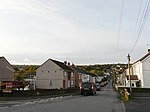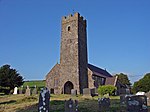Mynydd Llangyndeyrn
Mynydd Llangyndeyrn is a Site of Special Scientific Interest (SSSI) in Carmarthen & Dinefwr, Wales, and a hill reaching 263 metres (863 feet), which is a Marilyn. Mynydd Llangyndeyrn and the SSSI are located west of Drefach and north of Pontyberem. The SSSI is approximately 1.3 miles (2.1 km) east-west and 0.3 miles (0.48 km) north-south, taking the approximate shape of a horns downwards shallow crescent.The SSSI citation for Mynydd Llangyndeyrn specifies that it is "notable as one of the larger upland semi-natural areas left in south-west Wales which, unlike most others, remains lightly grazed." The site features marshy grassland, wet heath, and dry heath, and hosts the marsh fritillary butterfly (Euphydryas aurinia).
Excerpt from the Wikipedia article Mynydd Llangyndeyrn (License: CC BY-SA 3.0, Authors).Mynydd Llangyndeyrn
Geographical coordinates (GPS) Address Nearby Places Show on map
Geographical coordinates (GPS)
| Latitude | Longitude |
|---|---|
| N 51.79731 ° | E -4.19721 ° |
Address
Llangyndeyrn
, Llangyndeyrn
Wales, United Kingdom
Open on Google Maps



